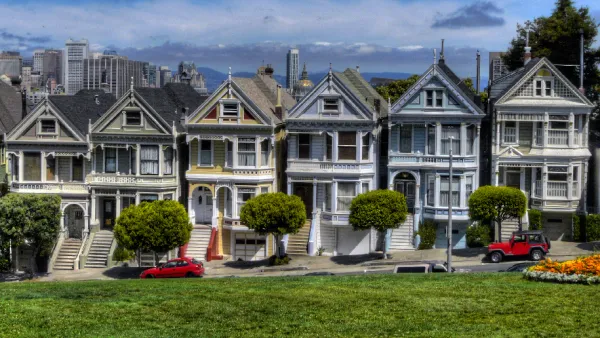Despite the intentions of the nation's fair housing laws, neighborhoods in the United States continue to segregate by race.

William H. Frey examines contemporary neighborhood residential segregation, using Census Bureau American Community Survey data from the 2015-2019.
According to Frey, the data show that "despite the fact that people of color account for the vast majority of recent U.S. population growth, white residents almost everywhere— including those in the nation’s most diverse metropolitan areas—continue to reside in mostly white neighborhoods."
And while neighborhood segregation has declined since the 1960s ("albeit modestly," writes Frey), "substantial levels of neighborhood segregation persist for Black residents and—to a sizable, though lesser extent—for Latino or Hispanic and Asian Americans."
Put another way: "Just as white neighborhoods continue to remain 'whiter' than their surrounding metropolitan areas, it’s also the case that neighborhoods where the average Black, Latino or Hispanic, and Asian American populations reside continue to include overrepresentations of those groups."
The source article includes a lot more data, analysis, and infographics.
FULL STORY: Neighborhood segregation persists for Black, Latino or Hispanic, and Asian Americans

National Parks Layoffs Will Cause Communities to Lose Billions
Thousands of essential park workers were laid off this week, just before the busy spring break season.

Retro-silient?: America’s First “Eco-burb,” The Woodlands Turns 50
A master-planned community north of Houston offers lessons on green infrastructure and resilient design, but falls short of its founder’s lofty affordability and walkability goals.

Delivering for America Plan Will Downgrade Mail Service in at Least 49.5 Percent of Zip Codes
Republican and Democrat lawmakers criticize the plan for its disproportionate negative impact on rural communities.

Test News Post 1
This is a summary

Test News Headline 46
Test for the image on the front page.

Balancing Bombs and Butterflies: How the National Guard Protects a Rare Species
The National Guard at Fort Indiantown Gap uses GIS technology and land management strategies to balance military training with conservation efforts, ensuring the survival of the rare eastern regal fritillary butterfly.
Urban Design for Planners 1: Software Tools
This six-course series explores essential urban design concepts using open source software and equips planners with the tools they need to participate fully in the urban design process.
Planning for Universal Design
Learn the tools for implementing Universal Design in planning regulations.
EMC Planning Group, Inc.
Planetizen
Planetizen
Mpact (formerly Rail~Volution)
Great Falls Development Authority, Inc.
HUDs Office of Policy Development and Research
NYU Wagner Graduate School of Public Service





























